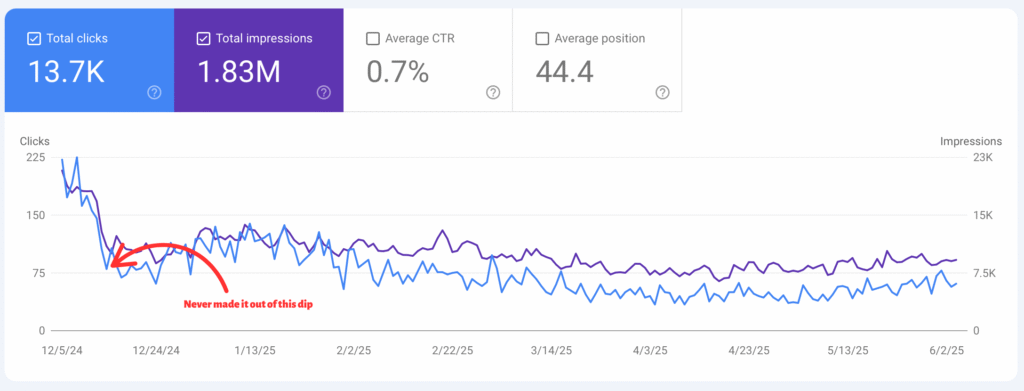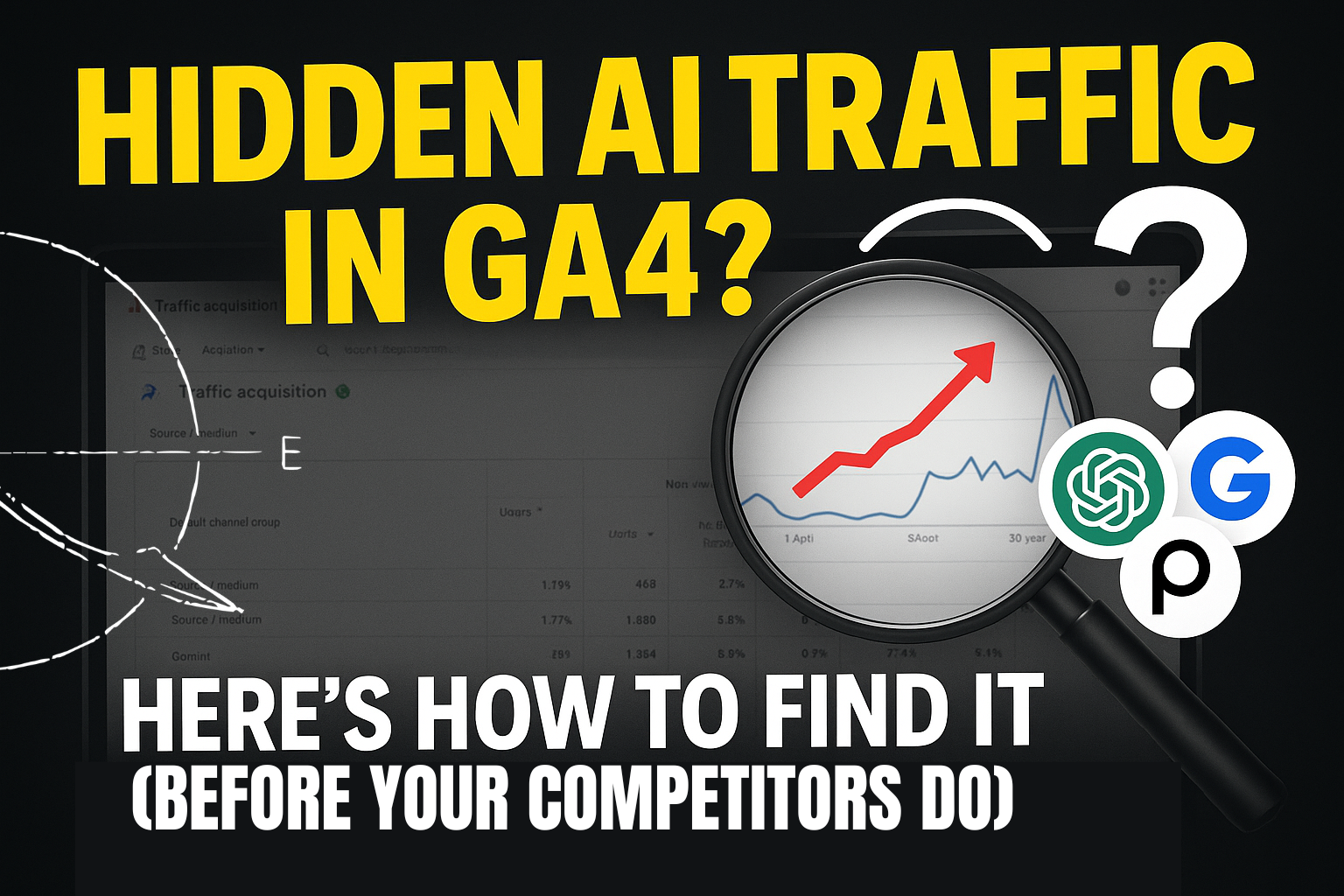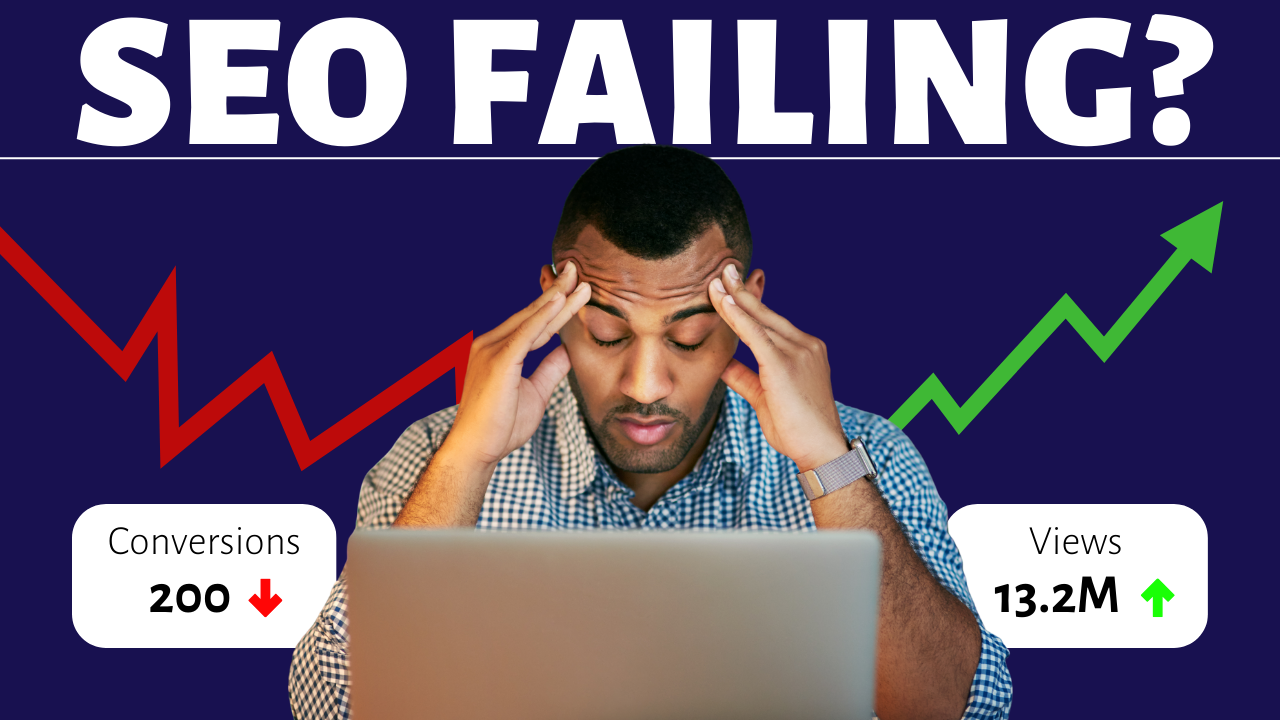Let’s be clear about one thing:
Google doesn’t owe you traffic.
It doesn’t owe you leads.
It doesn’t owe you rankings, clicks, or visibility just because you showed up with a blog post and some alt tags.
If your traffic tanked after an update, it’s not sabotage—it’s exposure.
In fact, if a single algorithm change can kill your entire funnel, you didn’t build a business.
You built a dependency.
The Entitlement Problem
There’s a quiet belief that still lingers in founder circles:
“If I publish consistently, follow SEO best practices, and check the boxes—Google will reward me.”
That might’ve worked in 2012. It’s a different game now.
The problem isn’t that Google changed. The problem is that most businesses are still building content for the old internet—where volume and checklists were enough to win.
But today?
Google’s algorithm has evolved.

It’s not looking for “content.” It’s looking for the best possible answer—backed by signals of credibility, depth, and usability.
Here’s what that actually looks like:
- Real topical authority not shallow blog posts on 20 random keywords
- Depth over density covering a topic thoroughly, not frequently
- Clear site structure and UX because a slow, confusing site is a bounce trap
- Demonstrated expertise not regurgitated fluff or AI-stuffed content
- User signals Google watches how people engage with your page. If they bounce fast, that’s your answer
You don’t get SEO credit for effort.
You get visibility when your content proves it’s the best solution for the user, not for you.
That means:
- You’re not just churning out weekly blog posts. You’re creating assets that map to the buyer journey, answer high-intent questions, and connect directly to your services.
- Clean page structure, clear hierarchy, no fluff intros, and content that gets to the point fast—because users don’t scroll to be impressed, they scroll to solve a problem.
- Pages load fast. Content is easy to scan. Topics go deep, not wide. And expertise is demonstrated through proof, not promises.
Because no matter how much time you’ve spent on that blog post—If it’s not the best answer…you don’t deserve to rank.
What No One Tells You About Organic Growth
You are not entitled to free exposure.
You are not guaranteed a spot on page one.
And no matter how much effort you’ve poured into your site, you are not immune to irrelevance.
Organic growth isn’t a right. It’s a reward.
But too many founders treat SEO like a vending machine:
“I publish the blog, I add the keywords, I press the button… and traffic shows up, right?”
Not quite.
Because organic growth doesn’t just measure output. It measures alignment—between what your audience wants, what your content delivers, and how well your site makes that experience frictionless.

Most businesses only realize this after their traffic tanks or their leads dry up.
And when that happens, the instinct is to blame the algorithm.
But the algorithm didn’t sabotage you.
It just got better at spotting the difference between relevant and replaceable.
If your organic growth has plateaued, the real culprit usually lives here:
- Your site structure → Is it crawlable, logical, and built around user intent?
- Your strategy → Are you creating content that drives action or just fills space?
- Your messaging → Is it clear who you serve and how you solve their problem, immediately?
- Your funnel logic → Are you turning traffic into conversations, or leaving them hanging?
Google didn’t ghost you.
You just stopped being the best option.
What to Do Instead (The Continental Way)
So—what actually works now?
If you want to earn visibility and leads in today’s market, you need more than content.
You need a system that proves your relevance, builds trust at scale, and drives action without guesswork.
That’s what we build.
At The Continental, we don’t chase trends. We build lean, conversion-first ecosystems for service-based brands that are done playing small.
Here’s what that looks like:
1. Build Content That Solves, Not Fills Space
We don’t publish just to stay active.
We publish to become the most useful thing on the internet for the person you want to reach.
That means content that shows up at the right time, solves the right problem, and quietly proves that we know exactly what we’re doing.
Authority-first content isn’t about more posts.
It’s about the right ones—written to rank, resonate, and drive action.
| Content That Fills Space | Content That Builds Authority |
|---|---|
| Top 10 Marketing Tips for Small Businesses | How We Helped a Consultant Triple Leads with One Funnel Fix |
| Why Blogging Still Matters in 2024 | The Only 3 Blog Posts We Recommend for Service-Based Founders |
| How to Write Better Emails (with no examples) | 5 Email Subject Lines That Generated 45%+ Open Rates (and Why They Worked) |
| The Basics of SEO (rewritten a million times) | How We Recovered a Client’s Traffic After a Google Update (Case Breakdown) |
| Blog post ends with: Let us know what you think | Ends with: Want results like this? Book a Strategy Sprint |
That’s what we build:
- Content that’s grounded in strategy
- Written by people who understand buyer psychology
- And always tied to a business outcome—not just clicks
Because at the end of the day, you don’t need content that looks good on your calendar. You need content that actually provides value and attracts the kind of traffic you need.
2. Create Topical Authority, Not Random Articles
You don’t need 100 blog posts.
You need five that go deep enough to make it painfully obvious you know your space better than anyone else.
Most service-based businesses fall into the content trap:
Publishing scattered, surface-level articles in hopes that one of them hits.
But Google doesn’t reward randomness. It rewards relevance + depth.
| Random Blog Topics | Topical Authority Cluster |
|---|---|
| Website Design Trends in 2024 | How to Fix a Coaching Offer That Won’t Sell |
| Finding Your Business Niche | 3 Messaging Mistakes That Kill Premium Conversions |
| Branding vs. Marketing Explained | What Makes Authority Positioning Stick (And How to Nail Yours) |
Let’s say you’re a brand strategist for coaches.
Instead of writing about:
- Website trends in 2024
- How to find your niche
- The difference between branding and marketing
You focus on one tight, profitable topic cluster like: Positioning for High-Ticket Coaching Offers
And you build 3–5 posts that go deep:
- How to fix a generic coaching offer that won’t sell
- 3 messaging mistakes that kill premium conversions
- A breakdown of what makes authority positioning stick
Suddenly, Google sees you as the go-to source.
Your audience sees it too.
Topical authority doesn’t mean creating more—it means showing up with clarity and owning the conversation.
Because being broad makes you blend in.
But going deep?
That’s what makes you the one they trust (and hire).
3. Stop Relying on One Channel
SEO isn’t a strategy. It’s a channel.
And no single channel—on its own—is going to build a predictable, scalable client pipeline.
Most founders go all in on one platform:
- They write 20 blog posts and wait for Google to notice
- Or post daily on Instagram, hoping reach = revenue
- Or build an email list with no plan to nurture it
It’s fragile. It burns you out. And it leaves money on the table.

For example, here at The Continental, we build systems that mix:
- Search → to attract long-term, high-intent traffic
- Email → to nurture trust and move people toward a decision
- Strategic distribution → like repurposed posts, newsletters, and referral loops
- Social amplification → to stay visible and relevant in the spaces your clients already hang out
Each piece supports the others.
No single algorithm controls your funnel. No content goes to waste.
Because the goal isn’t “being on every platform.”
The goal is building a system that works everywhere you show up.
4. Build for Conversion, Not Just Traffic
Traffic is a vanity metric if it doesn’t lead somewhere.
It doesn’t matter if you get 10,000 monthly visitors if none of them become leads, clients, or even conversations.
High traffic with zero conversions? That’s just noise.
And noise doesn’t pay the bills.
Most content falls flat because it lacks direction.
The reader finishes the blog post, email, or landing page and thinks: “cool…now what?”
And if you’re not telling them what to do next, Google won’t help them figure it out.
Here’s how we fix that:
Every piece of content has a job: to guide someone toward the next step—not just educate or entertain.
That might be:
- Booking a consult
- Downloading a lead magnet
- Joining your newsletter
- Or simply clicking into the next post in the funnel
We don’t just optimize for keywords—we optimize for outcomes.
Because in our world, good content doesn’t just get seen.
It contributes to your bottomline.
Google’s Job Is To Serve Its Users, Not Your Business.
It doesn’t owe you clicks just because you published something.
It won’t protect your rankings just because you followed the rules.
So stop expecting free traffic.
Start building a system that earns attention—because it’s better, sharper, and more useful than what’s already out there.
One that:
- Doesn’t break when the algorithm changes
- Doesn’t rely on luck or volume
- And doesn’t need to be rebuilt every six months
That’s what strategic marketing looks like.
That’s the work.
And that’s what we do.






